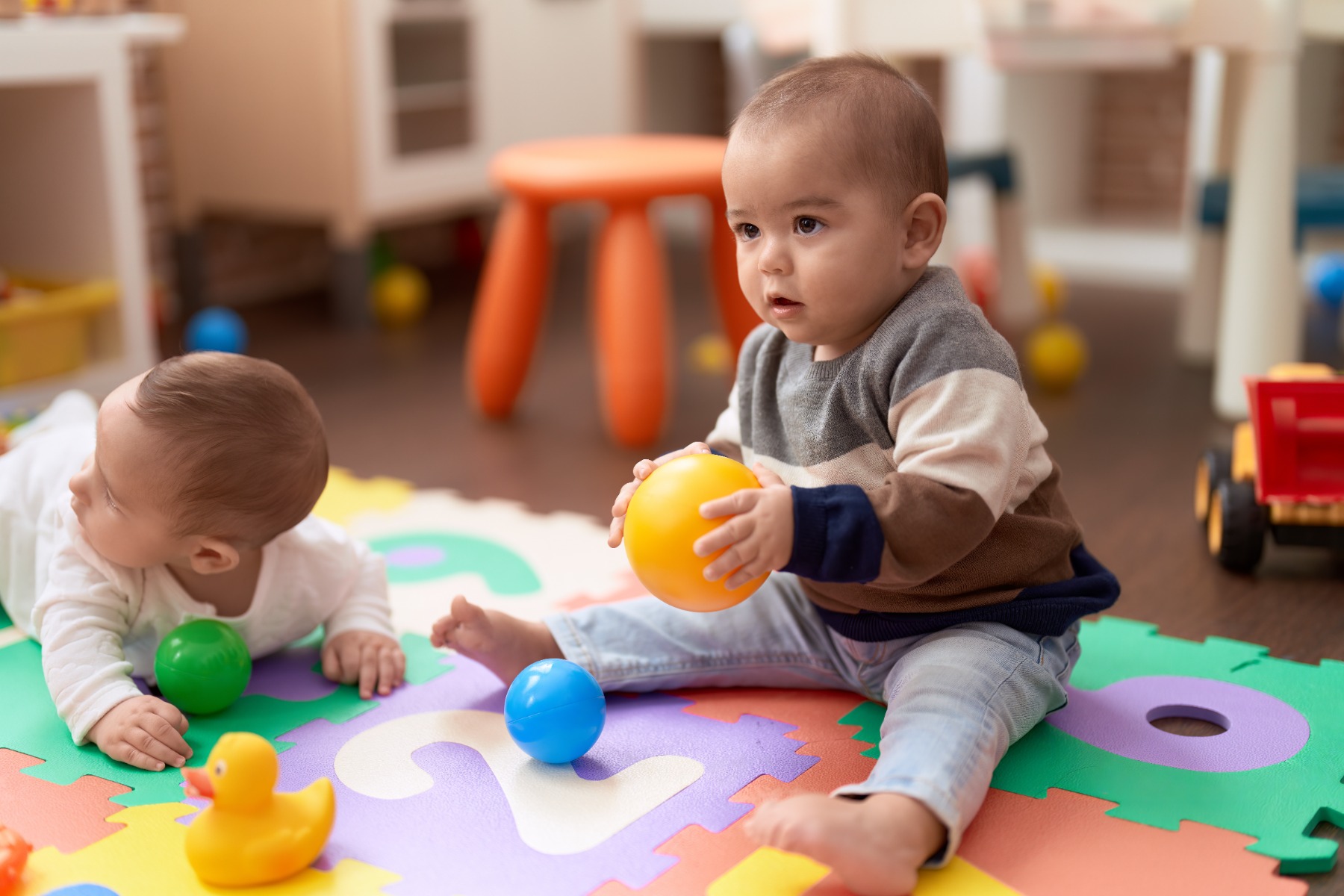Cookies and Privacy
Daytot processes information about your visit using cookies to improve site performance, facilitate social media sharing and offer advertising tailored to your interested.
By continuing to browse our site, you agree to the use of these cookies. For more information see our
Privacy & Cookie Policy.
Development During Their First Year

Developmental milestones are an excellent way to monitor your childs’ development and to identify delays early. Early identification of development delays can lead to early intervention which can make a big difference for your child and their skills. As stated above, milestones are guidelines. Every child develops on a slightly different track and that is okay. If your child is delayed on one or two milestones, that is not necessarily a cause for concern. However, if you are noticing several missed or delayed milestones, or noting regression in skills, they may benefit from further assessment. As their parent, you know your baby best and you are their advocate. If you feel like something needs looked at, further ask for that referral.
Now that we covered what milestones are, let’s review what your baby should be doing when and what are some red flags that warrant a pediatrician or pediatric therapist visit or referral. A regression of skills, or your child being unable to complete a skill they have previously mastered should be a red flag at any age and should be discussed with your pediatrician.
Tummy Time Milestones
Tummy time is one of the first skills your baby develops. As your baby grows, there are some progressions you should expect to see during tummy time. At 1-2 months, they should be briefly lifting their head and you may see them turn it to a side. This is to allow them to be able to safely clear their airway to be able to breath. At 3-4 months, babies should be raising their head to 45-90 degrees and pushing up onto their elbows. At 5-6 months, babies will push onto their hands, pivot in a circle, lift their head to 90 degrees and roll from back to belly and belly to back.
Rolling Milestones
Rolling will begin around 4 months. They will start by rolling from their back to their sides. Prior to this, you may see them roll from their back to belly in an uncontrolled motion that is due to reflexes and it will likely stop as they age. Around 6 months old, they will roll from back to belly and back to belly going to both the left and the right.
Sitting Milestones
Head control is a prerequisite skill for being able to sit on their own. Your babies will develop this with tummy time and rolling. By 4 months old, your baby will be able to sit with your support at their hips but will be able to control their head independently. At around 5-6 months, they will be able to sit without support. They will sit in a “prop sit” where they are relying on their arms to help support them. By 9 months, they are able to sit upright without using their arms for support. Additionally while sitting now they can play with a toy using one or both hands without losing their balance. By 12 months old, they can get in and out of sitting consistently without assistance.
Crawling Milestones
Crawling is a controversial motor skill and some children do skip it, but there are many benefits to crawling that help children later in their development. At 6 months old, babies will begin to get onto their hands and knees to initiate weightbearing through their arms and legs. They then will start to rock forward and back in this position. Between 6-9 months, babies will start to belly crawl or creep on their hands and knees which is what is typically thought of when you think of crawling.
Walking Milestones
Walking is a monumental skill in allowing your baby to be independent with their mobility. Before they can walk independently, there are several skills that need to be met. At around 9 months, babies will begin to pull to stand at furniture using mainly their arms for strength. Shortly after this time between 9-12 months babies will begin to cruise, walk along furniture, independently. This is a very important skill in progressing to walking as it helps your child develop their balance and improve their leg strength and balance. Typically, between 12-16 months your baby will begin to take steps independently and start consistently walking on their own.
Milestones are a guide. Nothing is set in stone and every child will progress at a slightly different speed. Red flags that may warrant a further assessment from your pediatrician or physical therapist include inability to complete skills they were previously able to do, being delayed in 2+ milestones or missing entire skills such as rolling or sitting. As mentioned, acting early can make a big difference for your child. If you have any questions or concerns, be sure to talk with your pediatrician or pediatric physical therapist.
Blogger Profile
Kimmy Krupack PT, DPT is a Doctor of Physical Therapy currently practicing at Chit Chat Pediatric Therapy in Vidalia, Georgia. In the past, she has worked in the NICU, Pediatric Acute Setting as well as Hospital based pediatric outpatient clinics. Her passion is working with developmental delay and torticollis, but she treats a variety of conditions. You can connect with Kimmy on Instagram @chitchatpediatrictherapy or @kimmy.peds.pt
